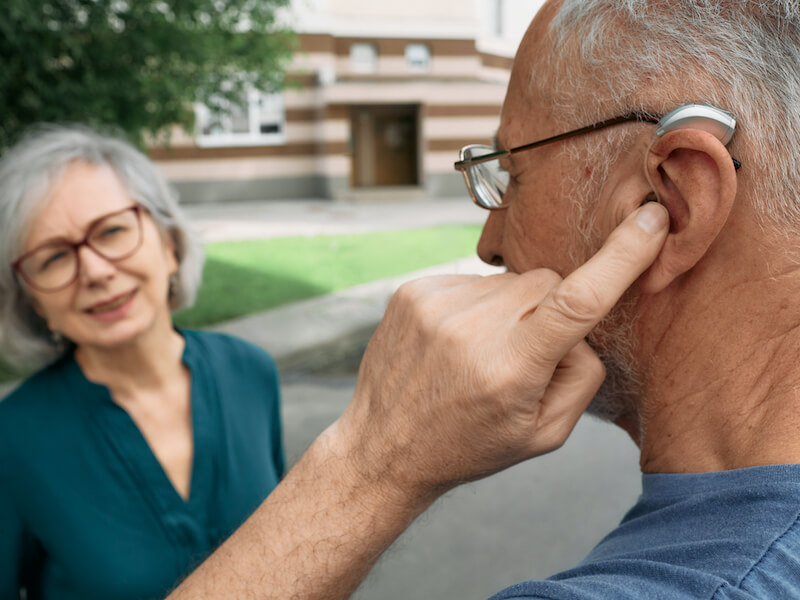
Have you ever been watching your favorite Netflix movie when your internet abruptly cuts out? You sit there and watch that spinning circle instead of learning about who won that cooking competition. And so you just wait. Is it your internet provider, modem, router, or maybe it will simply come back on its own? It sort of stinks.
When technology malfunctions, it can be really frustrating. Your hearing aids definitely fall into this category. When they’re working correctly, hearing aids can help you remain connected with the ones you love and better hear co-workers when they speak to you.
But your symptoms of hearing loss can suddenly become really frustrating when your hearing aids quit working. The technology you’re depending on has failed you. How do hearing aids just quit working? So what should you do? Here are the three prevalent ways your hearing aids can fail and how to troubleshoot and identify them.
Three common issues with hearing aids (and some possible solutions)
Hearing aids are sophisticated devices. Even still, there are some common problems that people with hearing aids may experience. Let’s take a look at possible causes of these problems and potential fixes.
Feedback and whistling
So, perhaps you’re attempting to have a conversation with your family or watch your favorite show and you begin to notice a horrific whistling sound. Or perhaps you notice a bit of feedback. And so you think, “Why am I hearing whistling in my hearing aids? This is odd”.
Here are three potential issues that could be causing this whistling and feedback:
- The functionality of your hearing aid can be impacted by earwax accumulation in your ear canal. You’ll find this comes up pretty regularly. That includes causing your hearing aids to whistle or feedback. If possible, you can attempt to clean some earwax out of your ear or consult with us about the best method to do that (don’t use a cotton swab).
- Your hearing aids may not be seated in your ears correctly. Try removing them and putting them back in. You can also try reducing the volume (if this works, you might find some short-term relief, but it also likely means that the fit isn’t quite right and you should talk to us about it).
- The tubing that connects the hearing aid with the earmold, on behind-the-ear models, can sometimes become compromised. Have a close look to see if the tube might have detached or might be damaged in some way.
If these issues are not easily resolvable, it’s worth talking to us about correcting the fit or sending your device in for maintenance (depending on what we think the root cause of that whistling or feedback may be).
Hearing aids not producing sound
Your hearing aids are supposed to make, well, sound. That’s their principal function! Something has undoubtedly gone wrong if you don’t hear any sound coming out of your hearing aid. So what could be the explanation when hearing aids work but no sound comes out? Here are some things to watch for:
- Your settings: Scroll through the custom settings if your device includes them. It’s possible your hearing devices are on the wrong custom setting (so perhaps your hearing aids think you’re in a concert hall instead of at the kitchen table). The sound you’re hearing could be off as a result.
- Batteries: Be sure your batteries are fully charged. And even rechargeable batteries should be swapped out once in a while.
- Power: Everybody forgets to turn their hearing aids on once in a while. Check for this first. This potential problem can then be eliminated..
- Earwax buildup: Here we go again with the earwax! Have a close look to see if you come across any earwax on the microphone or speakers. Keep your device really clean.
We are here for you if these measures don’t clear up your issues. We’ll be able to help you determine the next steps, and whether maintenance, repair, or replacement is needed.
When you have your hearing aids in, your ears hurt
What if your hearing aids work perfectly, but whenever you put them in your ears, your ears begin hurting? And you’re likely wondering why your hearing aids would hurt your ears. This kind of discomfort isn’t exactly conducive to using your hearing aids on a day-to-day basis. So, why do they ache?
- Fit: The fit of the device is the most evident issue. After all, most hearing aids work best when they fit tightly. Which means that there can sometimes be pain involved in a poor fit. Many hearing aids can be tailored to your particular ears. Over the long haul, you will have fewer problems if you have a snug fit. We will be able to help you get the best possible fit from your devices.
- Time: Usually, it just takes a little while to get accustomed to your hearing aids. Each individual will have a different adjustment period. When you first get your hearing aids, we can help you get a reasonable concept of the adjustment period you can anticipate. Also, speak with us about any discomfort you may be having.
Bypass issues with a little test drive
One of the best ways to avoid possible problems with hearing aids is to take them out for a bit of a test drive before you commit. In the majority of cases we’ll let you test out a set of devices before you determine that’s the pair for you.
In fact, we can help you identify the best type of hearing aid for your needs, adjust the fit to match your ears, and help you take care of any ongoing issues you might have with your devices. We will be your resource for any assistance you need.
And that’s probably more reliable than your internet company.